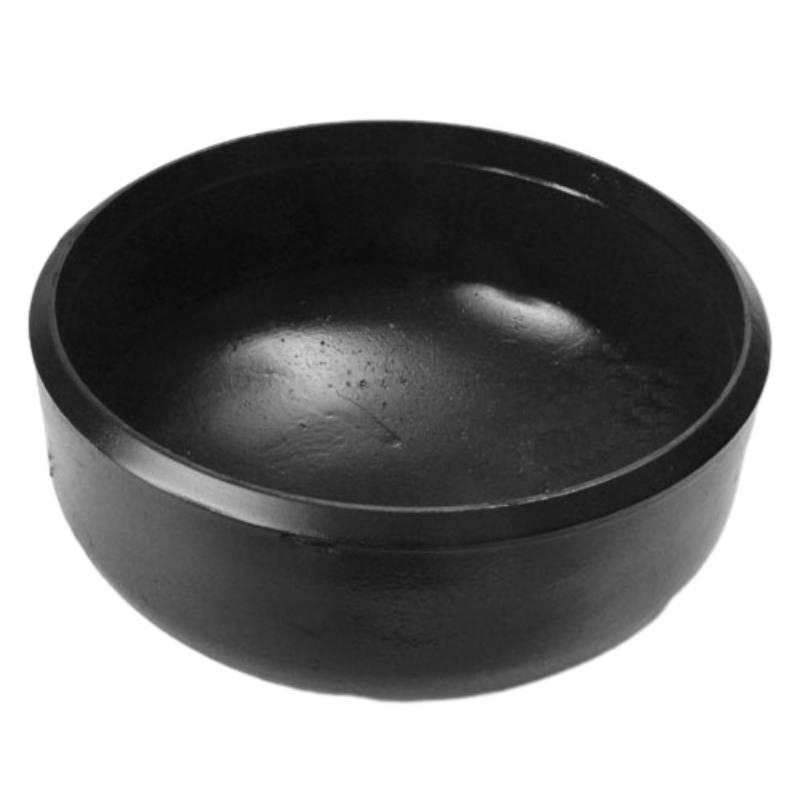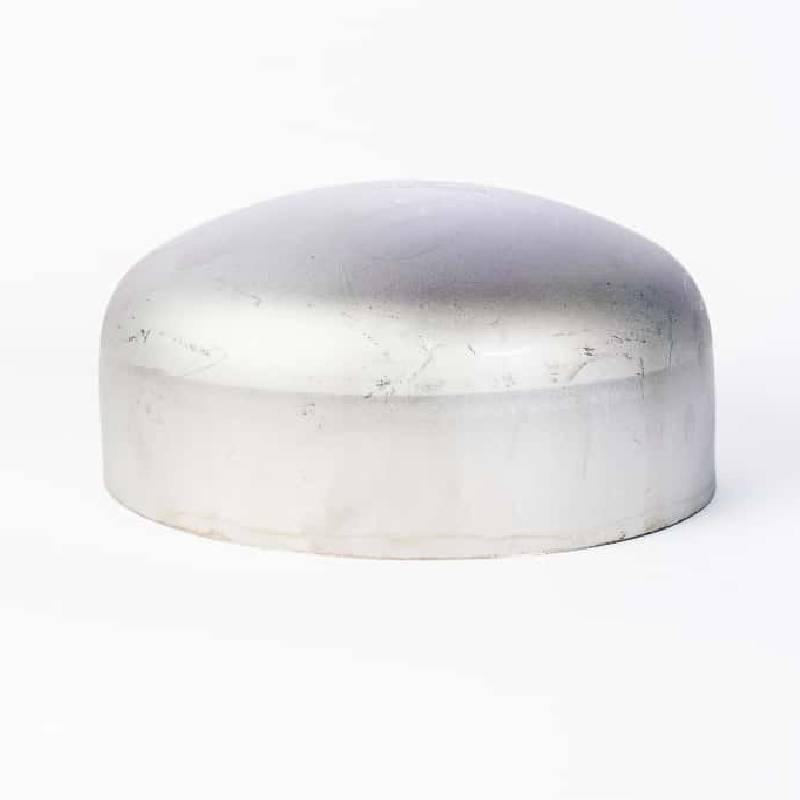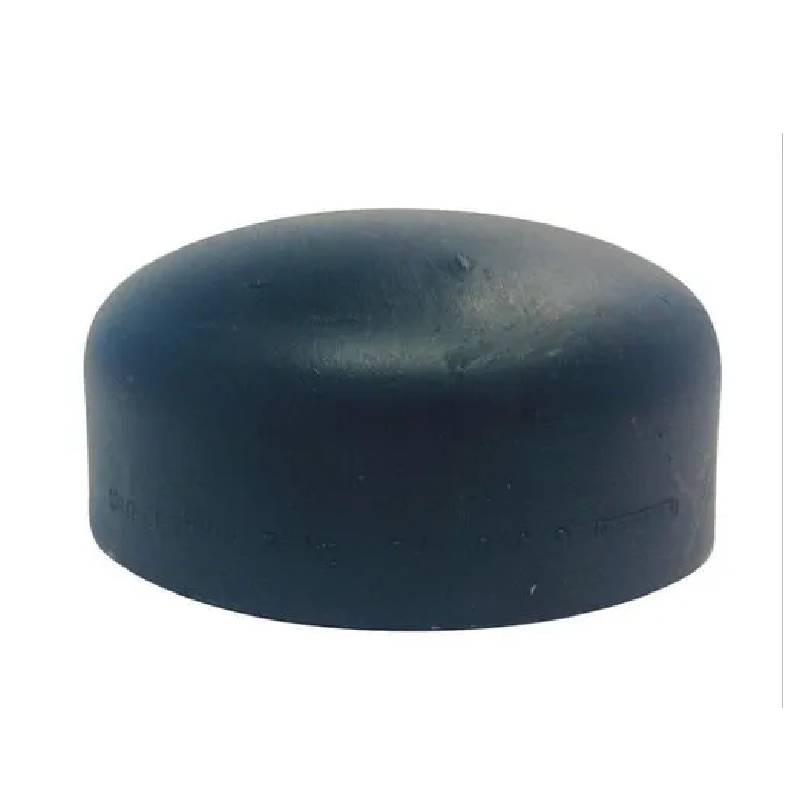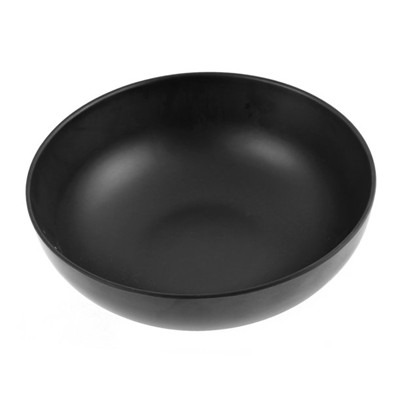-
Nkwekọrịta Ọkọlọtọ:
ANSI/ASME B16.9 mkpuchi ịgbado ọkụ na-agbaso nkọwapụta nke American National Standards Institute (ANSI) na American Society of Mechanical Engineers (ASME). Nhazi nke a na-eme ka otu, ndakọrịta, na ntụkwasị obi n'ichepụta na ịrụ ọrụ, na-eme ka njikọ na-enweghị ntụpọ n'ime usoro ọkpọkọ.
-
Njikọ Butt-welding:
A na-etinye okpu bọt-welding site na ịgbado ha ozugbo na nsọtụ ọkpọkọ, na-eke njikọ na-adịgide adịgide na nke siri ike. Usoro ịgbado ọkụ butt na-agụnye ikpo ọkụ na nsọtụ ọkpọkọ na okpu ruo ebe mgbaze, wee pịakọta ha ọnụ iji mepụta njikọ nke metallurgical. Usoro ịgbado ọkụ a na-enye njikọ siri ike na nke na-agbapụta, na-ewepụ mkpa maka ihe mkpuchi ọzọ.
-
Mmechi emechiri:
Ọrụ bụ isi nke okpu ịgbado ọkụ bụ inye mmechi mechiri emechi maka njedebe nke ọkpọkọ na sistemu ọkpọkọ. Okpu ndị a na-egosipụta ebe domed ma ọ bụ dị larịị nke na-ekpuchi oghere ọkpọkọ, na-egbochi mbanye ma ọ bụ mwepu nke mmiri ma ọ bụ gas. Njikọ welded na-eme ka akara siri ike, na-ebelata ihe ize ndụ nke ntanye na idobe iguzosi ike n'ezi ihe nke usoro ahụ.
-
Nhọrọ ihe:
Okpu bọt-welding dị na ihe dị iche iche iji kwado ọnọdụ ọrụ dị iche iche na mgbasa ozi. Ihe ndị a na-ahụkarị gụnyere carbon steel, igwe anaghị agba nchara, igwe anaghị agba nchara, yana alloy na-abụghị igwe dị ka ọla ma ọ bụ ọla kọpa. Nhọrọ nke ihe na-adabere na ihe ndị dị ka okpomọkụ, nrụgide, nkwụsị nke corrosion, na ndakọrịta na mmiri a na-ebufe.
-
Ngwa dịgasị iche iche:
ANSI/ASME B16.9 butt-welding okpu na-achọta ngwa n'ofe ụlọ ọrụ dị iche iche, gụnyere mmanụ na gas, petrochemical, nhazi kemịkalụ, ọgwụgwọ mmiri, na ike ike. A na-eji ha maka ịchichi njedebe nke pipeline, arịa, tankị, na akụrụngwa, na-enye nchebe pụọ na mmetọ, corrosion, na ihe egwu gburugburu ebe obibi.
-
Nhọrọ nhazi
Ọ bụ ezie na okpu ịgbado ọkụ na-agbaso ụkpụrụ ọkọlọtọ na nkọwapụta, nhọrọ nhazi dị maka imezu ihe achọrọ kpọmkwem. Nke a nwere ike ịgụnye mgbanwe dị na nha okpu, oke, ọkwa ihe, na ngwucha elu. Enwere ike ịhazi okpu ahaziri iche ka ọ dabara na nhazi ọkpọkọ pụrụ iche ma nabata ọnọdụ pụrụ iche ma ọ bụ gburugburu ebe ọrụ.
Buttweld Fittings Manufacturing Process
The manufacturing of buttweld fittings primarily involves two methods: cold drawing and hot forming.
The general steps in the process are as follows:
1. Material Preparation
The initial stage involves sourcing and preparing the raw materials needed for production.
2. Cutting
Pipes or plates are cut into specified shapes or lengths as per requirements.
3. Forming
The materials are shaped into various configurations, such as buttweld pipe caps, 90-degree elbows, and reducing tees. Cold drawn products are formed directly into their designated shapes using hammers, mechanical presses, or upsetters. In contrast, the hot forming process begins with heating the material, followed by shaping it.
4. Heat Treatment
This process entails heating and cooling the metals to alter their microstructure, enhancing both physical and mechanical properties to achieve the desired characteristics.
5. Machining
Sharp cutting tools are employed in this stage to refine shapes and prepare the ends of the fittings.
6. Inspection and Testing
The products undergo a thorough inspection in accordance with relevant standards, checking dimensions, material quality, and appearance.
7. Coating (if required)
Finally, a coating may be applied as necessary to meet specific requirements.
Butt Weld Pipe Cap FAQs
-
What materials are the butt weld pipe caps made from?
- Our butt weld pipe caps are crafted from high-quality materials including carbon steel, stainless steel, and alloy steel. This selection ensures durability and resistance to corrosion, making them suitable for a wide range of applications in various industries such as oil and gas, water supply, and construction.
-
What sizes are available for the butt weld pipe caps?
- We offer a comprehensive range of sizes for our butt weld pipe caps, from small diameters to large fittings, accommodating various pipe sizes. Please refer to the product listing for specific dimensions or contact our customer support for assistance in selecting the appropriate size for your project needs.
-
Are these butt-weld pipe caps suitable for high-pressure applications?
- Yes, our butt weld pipe caps are designed to support high-pressure applications. They meet industry standards and specifications, providing a secure and leak-proof seal that can withstand significant pressure levels. Be sure to check the specifications to ensure compatibility with your particular system requirements.
-
How do I install the butt weld pipe caps?
- Installing butt weld pipe caps requires welding them directly to the pipe for a strong, permanent connection. We recommend using qualified welders and following proper welding procedures to ensure a secure fit and maintain the integrity of the piping system. For detailed installation guidelines, please consult the accompanying technical documentation.
-
Can these butt-weld pipe caps be used in outdoor applications?
Absolutely! Our butt weld pipe caps are suitable for both indoor and outdoor applications. They are built to withstand environmental factors, making them ideal for exterior installations. For prolonged exposure to harsh conditions, we recommend our stainless steel options for enhanced resistance to corrosion.
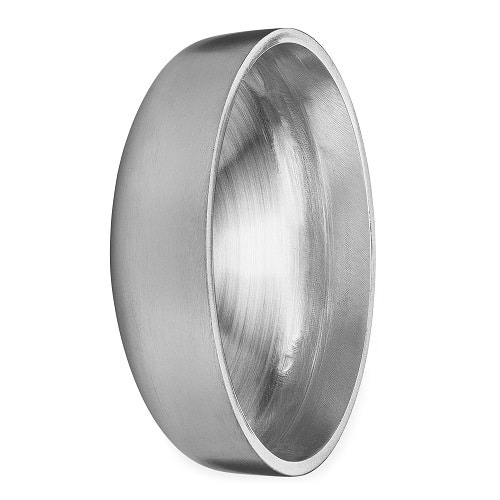
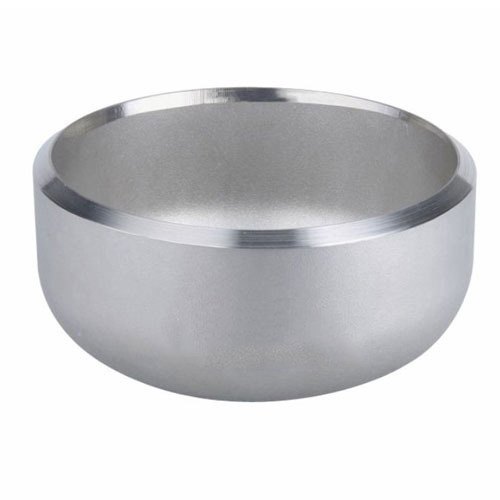
ANSI/ASME B16.9 butt-welding okpu bụ ihe dị oke mkpa na sistemu ọkpọkọ ụlọ ọrụ, na-enye mmechi nchekwa na mgbakasị ahụ maka ngwụcha ọkpọkọ. Nrube isi ha na ụkpụrụ ANSI na ASME, njikọ ịgbado ọkụ, ike akara, na ntụgharị na-eme ka ha dị mkpa na ngwa dị iche iche n'ofe ụlọ ọrụ. Site na mkpuchi ịgbado ọkụ, ndị injinia na ndị na-arụ ọrụ nwere ike hụ na iguzosi ike n'ezi ihe, nchekwa, na arụmọrụ nke sistemu ọkpọkọ ha, na-enye aka n'ịrụ ọrụ dị nro na enweghị nsogbu.







